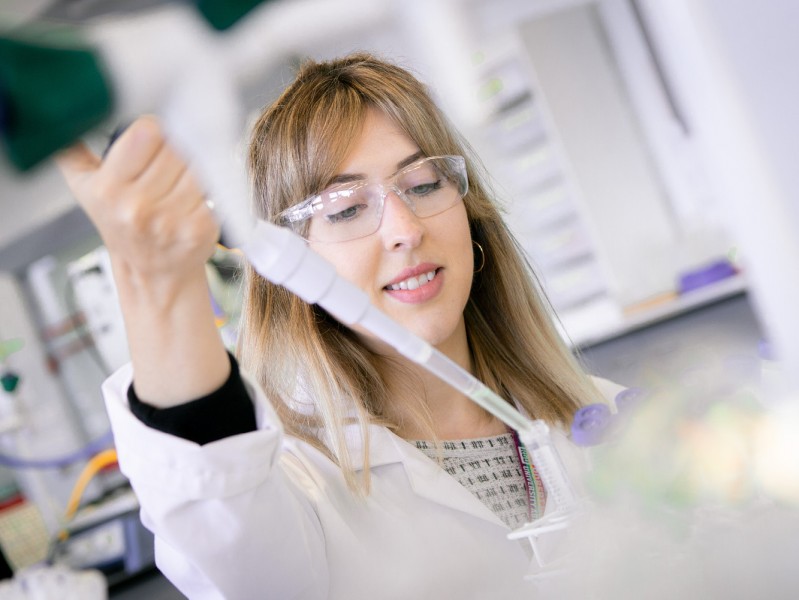Widening access to STEM tackles the challenges of tomorrow
Tuesday 07 April 2020

Science, technology, engineering and mathematics (STEM) drive societies forward, and will provide solutions to some of life’s most complex problems, such as climate change, antimicrobial resistance, and finding a cure for cancer. To tackle these challenges, it is imperative that access to STEM education is widened to every pupil in Scotland.
In 2015, UCAS reported that 18 year-olds from Scotland’s 20% least deprived communities are over four times more likely to access higher education than those from the 20% most deprived communities. This gap has narrowed in the past few years, helped by the Commission on Widening Access by the Scottish Government, outlined in ‘A blueprint for fairness’. This improvement can also be attributed to the widening-access initiatives at universities, which increase the opportunities for people from every background by looking at more than just academic attainment. It is important that every individual is supported to reach their potential, and this includes access to higher education.
Widening access and inclusion in STEM is something that we should all be passionate about. Research has shown that organisations with diverse workforces have a lower staff turnover, recruit from a wider talent pool and perform better financially. In 2017, the Scottish Government published its five-year STEM strategy for education and training, with the aim of building the country’s capacity to deliver STEM learning, and to close equity gaps in participation and attainment in STEM. It outlines four key aims to inspire curiosity and innovation: developing provision for STEM learning, closing equity gaps in participation and attainment, inspiring individuals of all ages to continue their studies in STEM subjects, and connecting STEM education and training with the needs of industry.
This is something we focus on at Robert Gordon University. I have had the privilege to be part of the university’s ‘Access to’ programme: a widening access initiative for S5 and S6 classes to enable talented pupils from under-represented groups to achieve their ambitions of studying STEM subjects, such as Computing and Engineering. I am part of the team delivering the ‘Access to Life Science’ programme, and it is so rewarding to see the development of confidence in each pupil involved in hands-on learning.
Encouraging curiosity and interest, by providing STEM-related experience to youngsters in this way, should start from early years. As a STEM ambassador, this is something that I am passionate about and, in particular, shining a light on my field of study, biomedical science, and the critical contribution it makes to positive patient outcomes.
Biomedical scientists are responsible for diagnosis, monitoring, treatment, and research of human health and disease. They are part of the modern, collaborative, multidisciplinary team that provides the world-class level of care that we see in our National Health Service. If it can be cut out, squeezed out, scraped, or filled into a tube, the biomedical scientist will analyse it. They work in one of the broadest areas of modern science, specialising in infection, blood, and cellular sciences and the career paths available are diverse and expanding.
To help pupils explore the role of the biomedical scientist, I have received funding from professional bodies such as the Royal College of Pathologists and the Institute of Biomedical Science to design and facilitate outreach activities. Providing immersive hands-on experiences often sees an increase in confidence and strengthens STEM-related life skills and STEM literacy.
The importance of encouraging the next generation into STEM subjects, like biomedical science, can be seen in our global response to COVID-19. Medics, scientists, engineers, and mathematicians have come together to provide care, develop new technologies for testing, and design models for predicting the epidemiological impact of the virus. On January 11, Chinese authorities shared the genetic sequence of the novel coronavirus, and only two days later an American biotechnology company finalised the sequence of a vaccine which then entered Phase 1 trials on 16th March. It will take time before we will see COVID-19 vaccines offered on a large scale, but the progress made so far has been incredible.
This is an important time to be part of, and encourage others to join, the STEM community. In Scotland, it is projected that STEM related employment will grow by 4% from 2015 to 2027. This means that there will be approximately 42,600 jobs created in this area, with the most rapid growth forecasted between 2021 and 2024. Technological advances, particularly in the field of AI and machine learning will open further opportunities to drive society forward, and those who choose to study STEM subjects today will join the careers that tackle the pandemics and technological breakthroughs of tomorrow.
